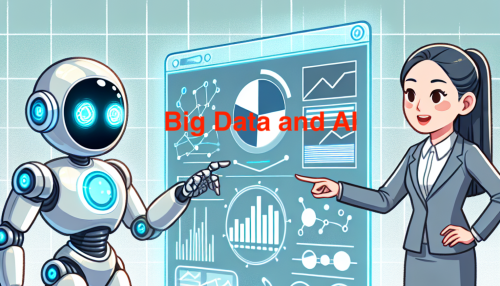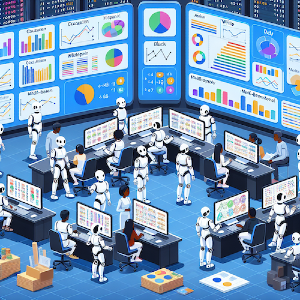How AI is Enhancing Data Analysis for Unprecedented Accuracy

In the rapidly evolving landscape of data analysis, Artificial Intelligence (AI) is emerging as a game-changer, driving unprecedented levels of accuracy and efficiency. Leveraging advanced algorithms, machine learning, and deep learning techniques, AI is transforming how data is interpreted, leading to more insightful and actionable results.This blog delves into the myriad ways AI is revolutionizing data analysis, ensuring businesses and researchers can make more informed decisions.
The Role of Machine Learning in Data Analysis
At the heart of AI's impact on data analysis is machine learning (ML). Machine learning algorithms can sift through vast amounts of data, identifying patterns and correlations that traditional methods might miss. By training models on historical data, these algorithms can predict future trends with remarkable precision. This predictive capability is particularly valuable in fields such as finance, healthcare, and marketing, where anticipating future developments can drive strategic decision-making.
Deep Learning: Unlocking Complex Data Insights
Deep learning, a subset of machine learning, takes data analysis to another level by mimicking the human brain's neural networks. This approach is especially effective for analyzing unstructured data, such as images, audio, and text. Deep learning models can perform tasks like image recognition, natural language processing (NLP), and sentiment analysis with high accuracy. For instance, in the healthcare sector, deep learning algorithms can analyze medical images to detect early signs of diseases, significantly improving diagnostic accuracy.
Natural Language Processing: Understanding Human Language
Natural Language Processing (NLP) is another AI-driven technology enhancing data analysis. NLP enables machines to understand, interpret, and generate human language, making it possible to analyze vast amounts of textual data from sources like social media, customer reviews, and research papers. By applying sentiment analysis and topic modeling, businesses can gain insights into customer opinions and emerging trends, allowing for more targeted marketing strategies and product development.

Big Data and AI: A Symbiotic Relationship
The explosion of big data has created a demand for more sophisticated analytical tools, and AI fits this need perfectly. AI technologies can process and analyze massive datasets at speeds unattainable by human analysts. For example, in the realm of cybersecurity, AI algorithms can monitor network traffic in real-time to detect anomalies and potential threats, ensuring data integrity and security.
Real-Time Data Analysis: Speed and Precision
One of the most significant advantages of AI in data analysis is the ability to process data in real-time. Real-time data analysis allows businesses to respond swiftly to changing conditions, making it possible to capitalize on new opportunities or mitigate risks promptly. In the stock market, for example, AI-driven trading algorithms can analyze market data and execute trades within milliseconds, maximizing profits and minimizing losses.
The Future of AI in Data Analysis
As AI technology continues to advance, its role in data analysis will only expand. Future developments may include more sophisticated AI models capable of understanding context and making more nuanced predictions. Additionally, the integration of AI with other emerging technologies like the Internet of Things (IoT) and blockchain could further enhance data analysis capabilities, leading to even greater accuracy and reliability.
Conclusion
AI is undeniably reshaping the field of data analysis, offering tools and techniques that deliver unprecedented accuracy and insights. By harnessing the power of machine learning, deep learning, NLP, and real-time data processing, businesses and researchers can unlock the full potential of their data. As we look to the future, the ongoing evolution of AI promises to bring even more revolutionary changes, solidifying its role as a cornerstone of modern data analysis.
